During my summer break, I took a two-day trip to Miyagi Prefecture and visited Sendai and Matsushima. In this article, let me share my Day 1 in Sendai with you!
Sendai is the capital city of Miyagi Prefecture, which is located in the northern part of the main island of Japan, facing the Pacific Ocean. It takes just 1 hour and a half from Tokyo by bullet train.
♪Day 1: Sendai
☆Zunda Shake
My trip to Sendai started with a cold zunda shake. What is zunda? Zunda is a paste made from young soybeans. It is said that a mochi shop in Sendai started selling zunda mochi in the Taisho era (1912-1926), and it has become Sendai’s iconic food. While walking in Sendai, I saw the signs of “Zunda such-and-such” here and there. From the central exit of the bullet train at Sendai station, turn right, and you can see the greenish shop called Zunda Saryo (ずんだ茶寮). It was a hot summer day, and I was hooked by the zunda shake!! It was so tasty and quenched my thirst!

Bottom right: Zunda mochi

Bottom left: Zunda dango
Bottom middle: Zunda soft serve ice cream
Bottom right: Zunda mochi, a popular souvenir
☆Gyutan, Beef Tongue
It’s lunch time! One of my friends living in Sendai kindly took me to an authentic Gyutan restaurant.
When it comes to Sendai, we cannot leave here without eating gyutan, grilled beef tongue. The birth of gyutan goes back to around 1945, when Japan was experiencing post-war reconstruction. A Japanese chef, Sano Keishiro, was running a yakitori, grilled chicken restaurant. He wanted to create his original dish and started serving gyutan with the idea of tongue stew at his friend’s western food restaurant. He was the first owner of a gyutan restaurant, Tasuke (太助), and thanks to his effort, we can enjoy gyutan now!
We can see each beef tongue is grilled over charcoal carefully and diligently, and it goes without saying: it was mouth-watering! I learned that there are some common side dishes when it comes to gyutan, and they help us to enjoy gyutan more!
-Side dishes-
- Miso Nanban (味噌南蛮): Miso with hot pepper
- Hakusai no tsukemono (白菜の漬物): Pickled Chinese cabbage
- Mugi gohan (麦ごはん): Barley Rice
- Tororo(とろろ): Pounded Yam
- Tail Soup
☆Zuihoden (瑞鳳殿)
Speaking of Sendai, Date Masamune, the first Lord of Sendai, is the key figure in the history of this area. Zuihoden is the place where Date Masamune rests in peace. By walking up the path surrounded by cedar trees, we can reach the splendid mausoleum.
To go to Zuihoden, it takes about 15 minutes from the Sendai station by the city loop bus called “Loople Sendai.” If you buy the one-day ticket for 630 yen, you can get a discount on your admission fee for Zuihoden: e.g. 570 yen→460 yen per adult
☆Aobajo (青葉城)
Next, I went to Aobajo, the Aoba castle ruins, by Loople Sendai. When I was gathering information about this place, I saw the words “Sendaijo-shi (仙台城址) or “Sendaijo-ato (仙台城跡), but I heard that local people call it “Aobajo-shi (青葉城址)” or “Aobajo (青葉城). Although the castle was destroyed by fire in the Meiji era (1868-1912), honmaru (本丸), the keep, used to be on the top of Mt. Aoba, where we can see the famous statue of Date Masamune now.
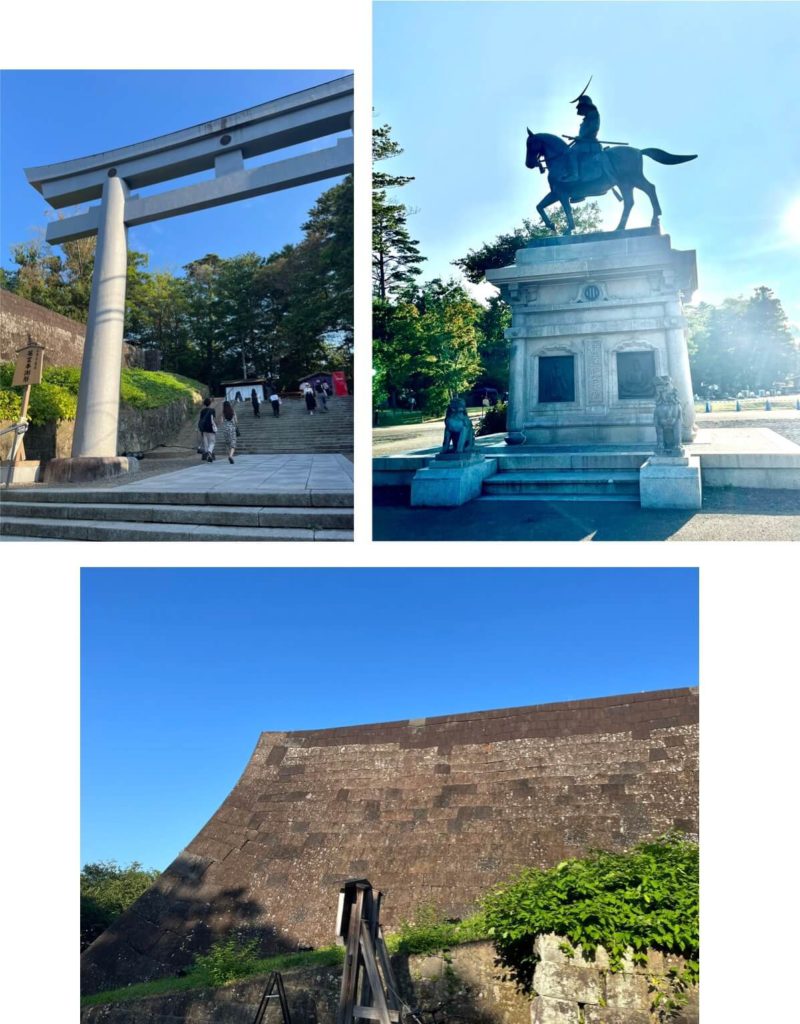
Bottom: Castle stone walls
The bronze kite statue is also impressive. It is called Shochuhi (昭忠碑) and was built in memory of fallen soldiers during the war. Although the kite used to be on the top of the stone tower, it was destroyed by the 2011 off the Pacific coast of Tohoku Earthquake and was rebuilt and put in front of the tower in 2016.
Just standing near the statue of Date Masamune, we can see the vast view of Sendai. I pondered over Date Masamune being ambitious to unify the whole country from here.

Top Right: Shochuhi (昭忠碑)
Bottom Left: The city view from Aobajo
Bottom Right: Tanabata decorations at Aobajo
Aobajo-shi (青葉城址)
☆Tanabata Festival
This is the biggest reason why I chose Sendai as my destination in August. Tanabata Festival, Star Festival, is usually held on July 7th in many places in Japan. However, some places celebrate it in August, and Sendai is one of them. Sendai Tanabata Festival is held from August 6th to 8th, and it is definitely one of the biggest Tanabata Festivals in Japan.
Tanabata originated from a story in China, where two stars, Hikoboshi (Altair) and Orihime (Vega), who lived at the two opposite banks of the Milky Way, can meet only once a year on July 7th in the lunar calendar. It falls in August in the current calendar, so Sendai’s Tanabata in August makes sense. I believe it is the most romantic festival throughout the year.
On Tanabata, people write their wishes on strips of colorful paper and hang them from bamboo branches as in the picture below. We can see these decorations especially in kindergartens, schools, or malls here and there around Tanabata season in Japan.

I feel Sendai’s Tanabata Festival is the bigger version of this. Beautiful decorations created by local people full of peaceful wishes continued to attract me while walking through the arcade.
☆To be continued…
My Day 1 ended with a fun meeting with my friends living in Sendai on Tanabata night. They gave me a hearty welcome, and it made my trip more precious and perfect!
In my next article, I will write about Day 2 of my trip to Miyagi. On Day 2, I enjoyed having me-time in Matsushima. I hope you’ll like it!
Working for an English language school. My source of energy is our students’ smiles full of curiosity. I love visiting my friends in and outside of Japan.

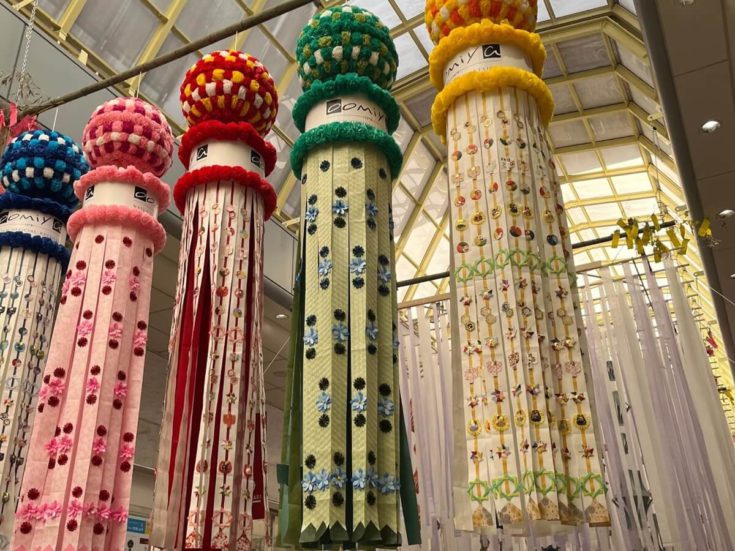
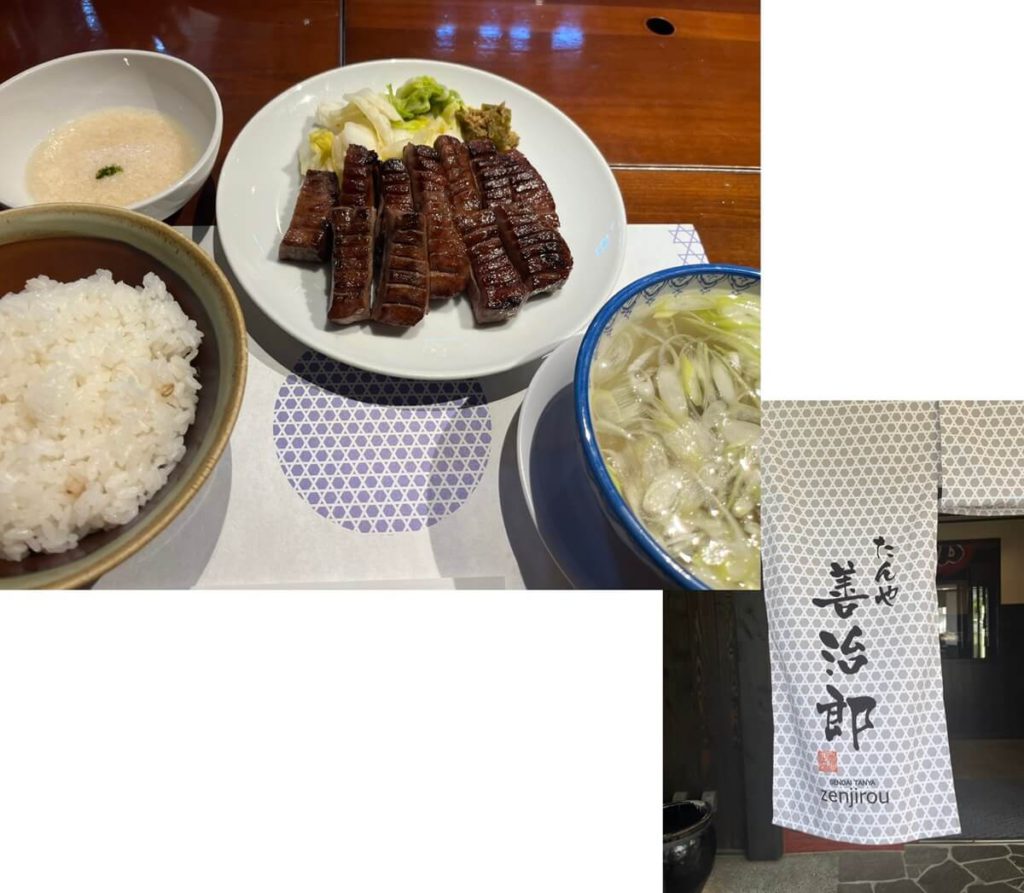

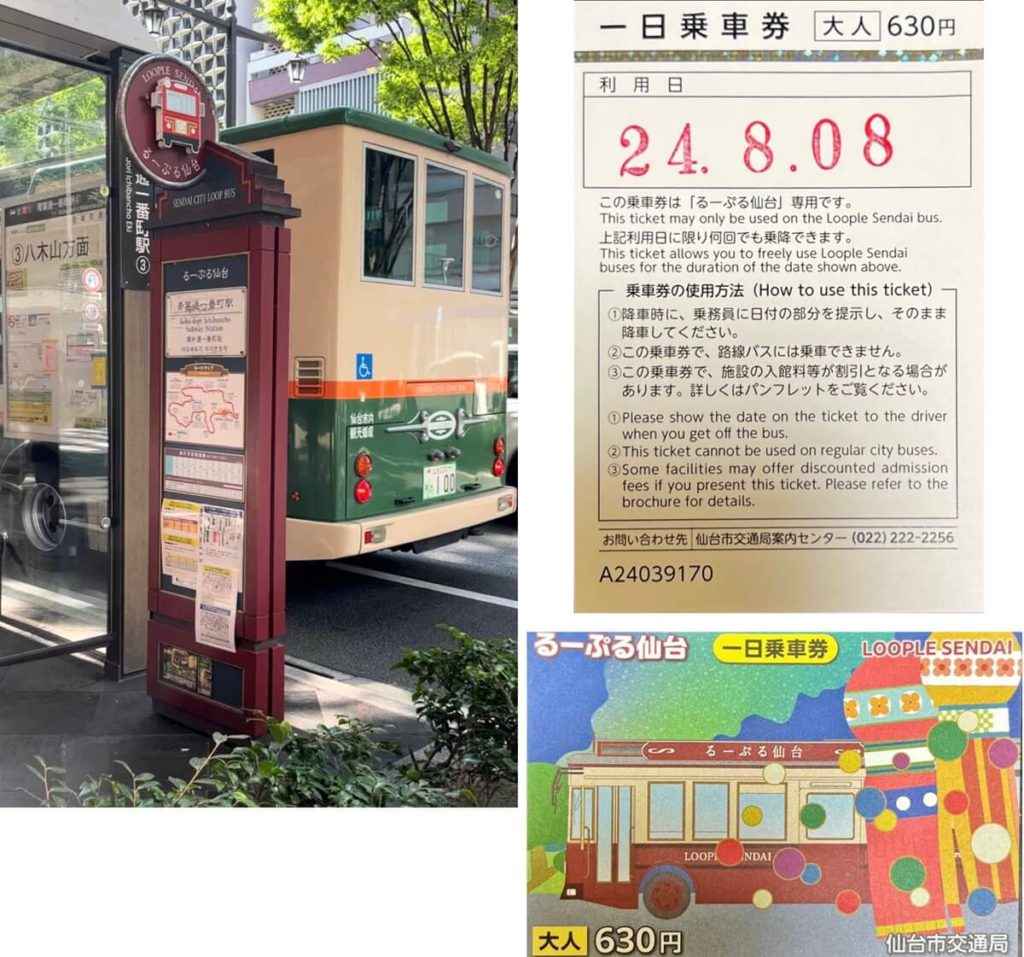


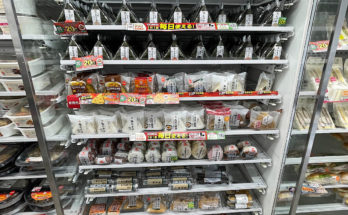

 HTJ has a YouTube page! Check it out
HTJ has a YouTube page! Check it out